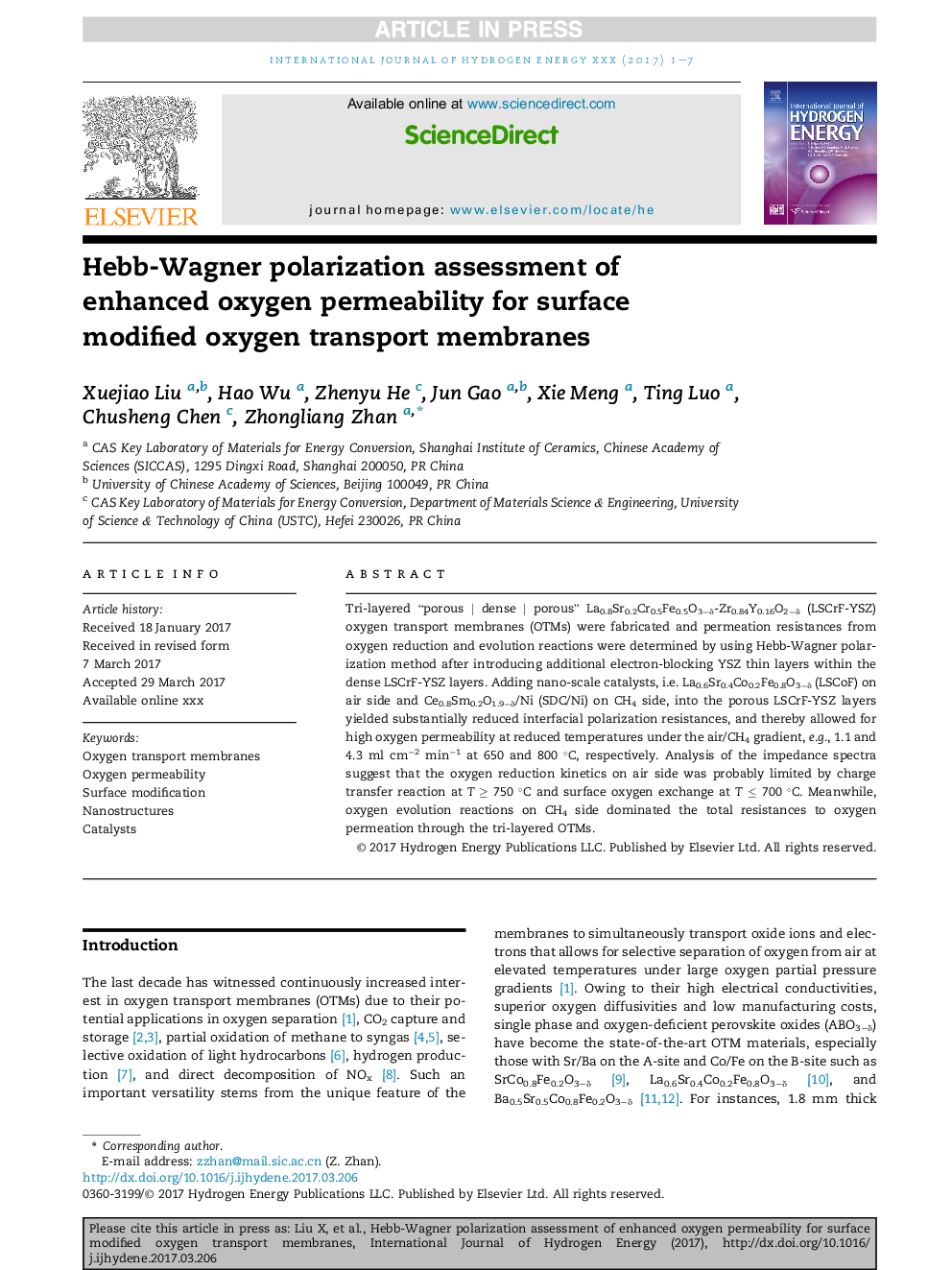| Article ID | Journal | Published Year | Pages | File Type |
|---|---|---|---|---|
| 5146204 | International Journal of Hydrogen Energy | 2017 | 7 Pages |
Abstract
Tri-layered “porous | dense | porous” La0.8Sr0.2Cr0.5Fe0.5O3âδ-Zr0.84Y0.16O2âδ (LSCrF-YSZ) oxygen transport membranes (OTMs) were fabricated and permeation resistances from oxygen reduction and evolution reactions were determined by using Hebb-Wagner polarization method after introducing additional electron-blocking YSZ thin layers within the dense LSCrF-YSZ layers. Adding nano-scale catalysts, i.e. La0.6Sr0.4Co0.2Fe0.8O3âδ (LSCoF) on air side and Ce0.8Sm0.2O1.9âδ/Ni (SDC/Ni) on CH4 side, into the porous LSCrF-YSZ layers yielded substantially reduced interfacial polarization resistances, and thereby allowed for high oxygen permeability at reduced temperatures under the air/CH4 gradient, e.g., 1.1 and 4.3 ml cmâ2 minâ1 at 650 and 800 °C, respectively. Analysis of the impedance spectra suggest that the oxygen reduction kinetics on air side was probably limited by charge transfer reaction at T â¥Â 750 °C and surface oxygen exchange at T â¤Â 700 °C. Meanwhile, oxygen evolution reactions on CH4 side dominated the total resistances to oxygen permeation through the tri-layered OTMs.
Related Topics
Physical Sciences and Engineering
Chemistry
Electrochemistry
Authors
Xuejiao Liu, Hao Wu, Zhenyu He, Jun Gao, Xie Meng, Ting Luo, Chusheng Chen, Zhongliang Zhan,
